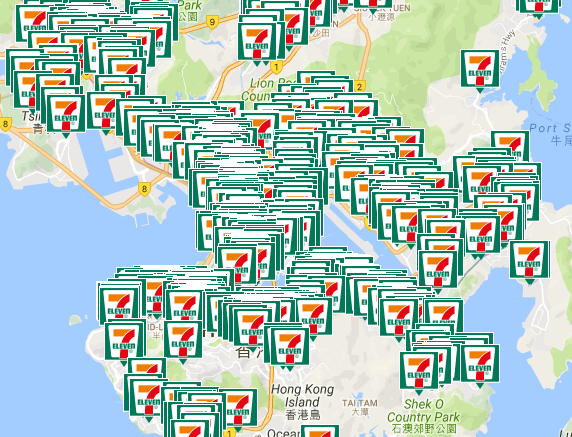7-Eleven's operational dominance in Japan
I recently visited Japan and found that the 7-Elevens in Japan are awesome. Unlike their US counterparts, Japanese 7-Elevens are constantly restocked with fresh food.
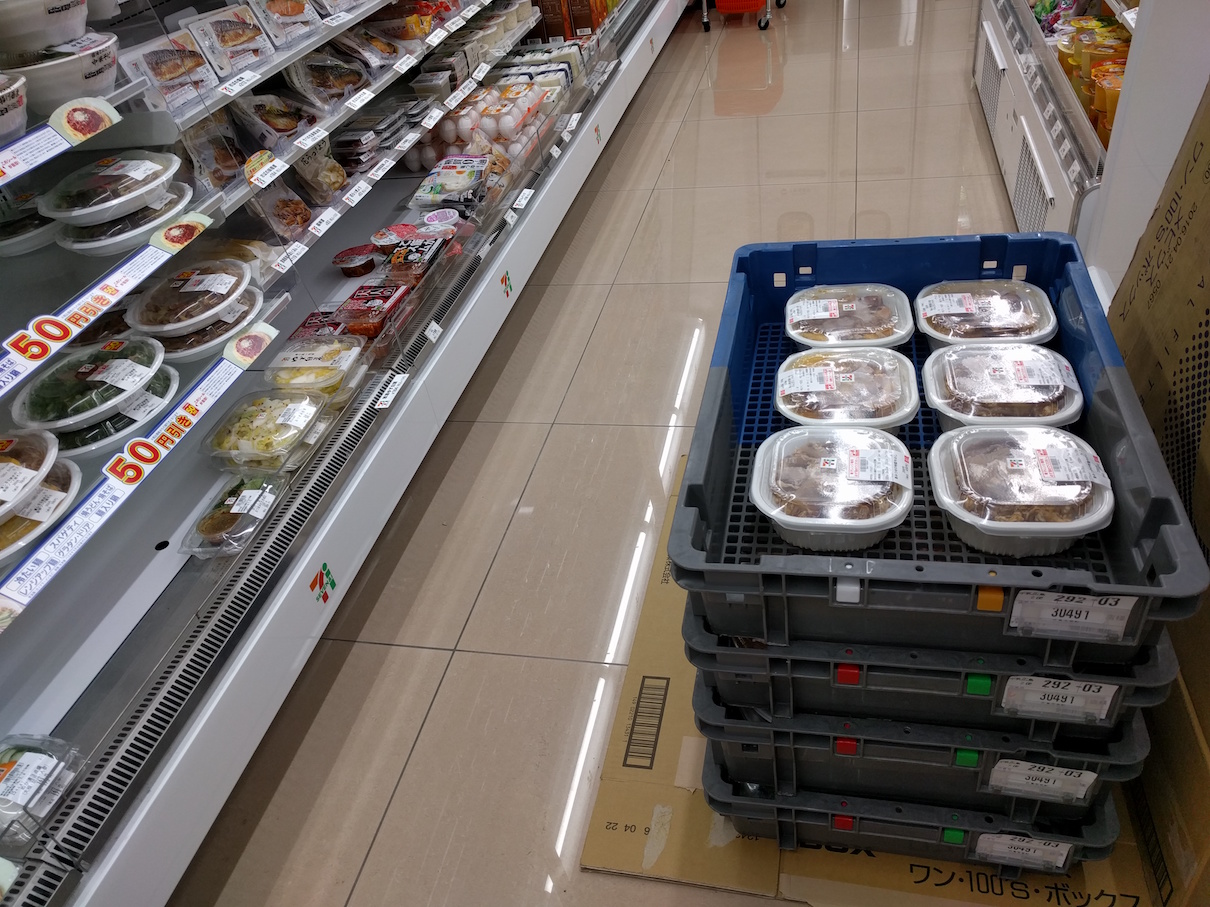
7-Eleven has the majority market share of convenience stores in Japan. In order to hold this position, 7-Elevens in Japan have to constantly restock items throughout the day as they sell out. There isn’t enough room in the store to keep a large backstock of items, but this works out well since fresh goods can constantly be resupplied.
A typical 7-Eleven has one side of the store specially dedicated to fresh food.
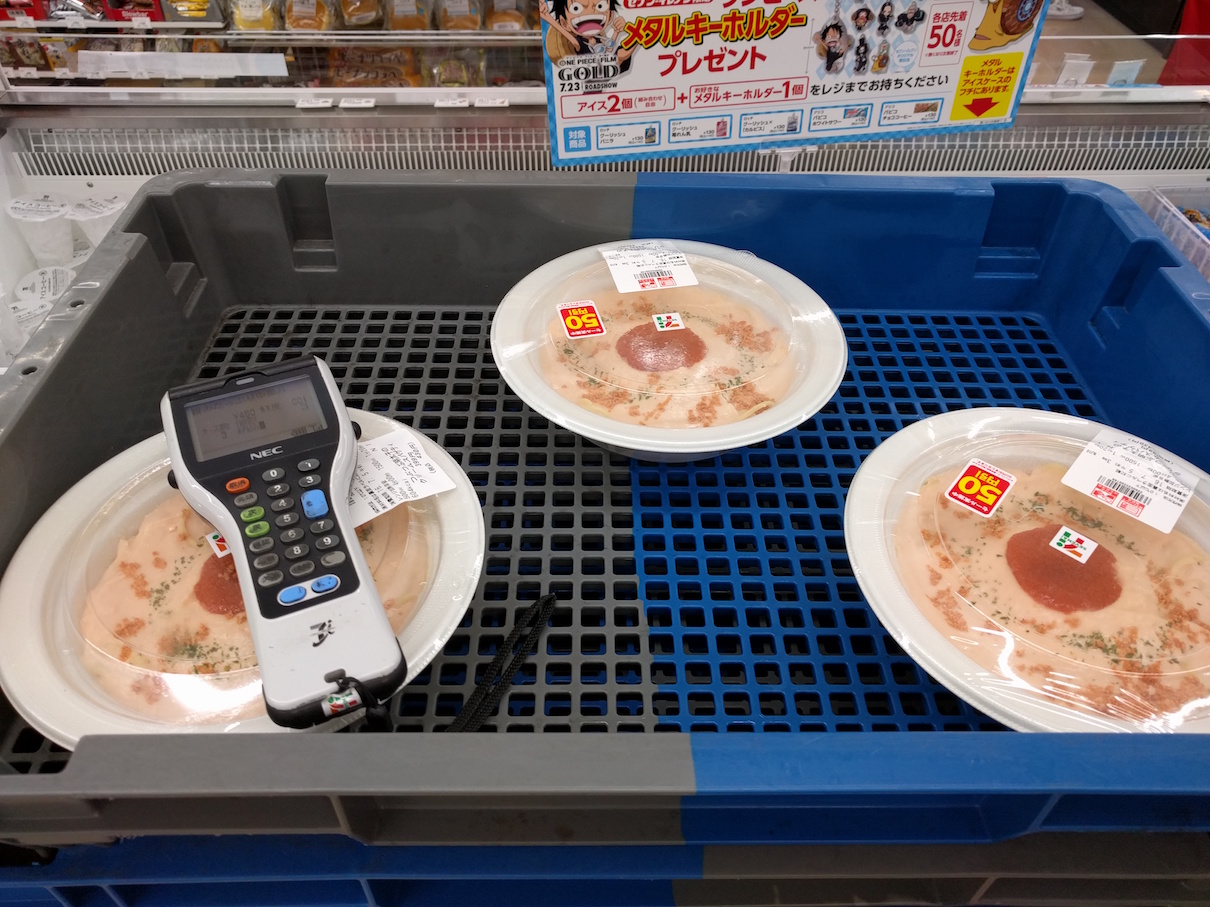
Food items are scanned when they are restocked, and inventory is counted down during checkout. Throughout the day the store gets resupplied by a local distribution center. I’m not sure of the timing of the restockings; I’ve seen stores getting restocked at all the times I’ve been in the stores from 7am to about midnight.
There are also baked goods sold and resupplied at about the same rate as the fresh food. According to the slide deck, 7-Eleven categorizes their suppliers into 4 different temperatures - chilled, frozen, warm, and room temp. I’m not sure if they come from the same center or if there’s multiple distribution centers for different temps. The square footage of buildings in cities are small, so having both large fridges & warm ovens in one location may not be feasible.
Do the baked & fresh goods come from a 7-Eleven owned kitchen or are they subcontracted out to 3rd parties? There are lower costs associated with a 7-Eleven kitchen, however subcontracting out to 3rd parties may allow stores to be more flexible with their stock if there is a high turnover in types of items.
Beyond that, there’s also freshly made coffee. You can select either iced or hot:
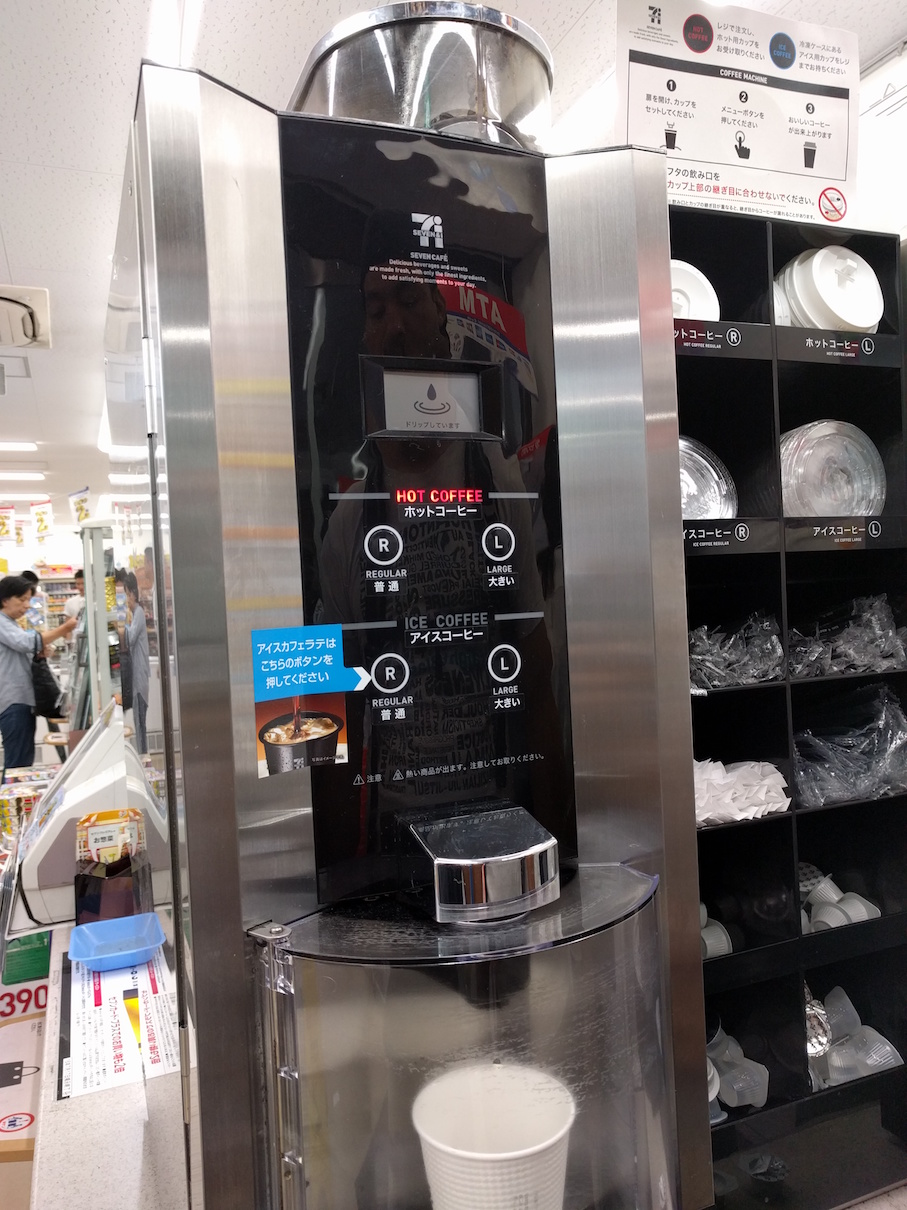
Since every store relies heavily on restocking goods throughout the day to meet daily sales, it’s important that every region has a high density of 7-Elevens. This way one delivery truck can cover multiple stores each time. Just check out Hong-Kong for example:
7-Elevens also aim to supply more than just basic foods. The multi-purpose scanner also allows customers to buy tickets to shows & ballgames [1], pay bills [2], get money from ATMs [3], and even do dry cleaning [4]. Anything that needs to be done on a regular basis can be done at 7-Eleven.
There’s a few slide decks I found online about how 7-Eleven structures their distribution system: http://www.slideshare.net/pritameilanitasari/supply-chain-strategy-at-7eleven
http://www.slideshare.net/susheelr/supply-chain-management-of-7-eleven
In the second slide link, two interesting tidbits are:
- 7-Eleven’s 4th gen IT system was installed in 1991 at a cost of ~$200 million
- 5th gen IT system was installed in 1998
The diagram for the 5th gen system looks like this: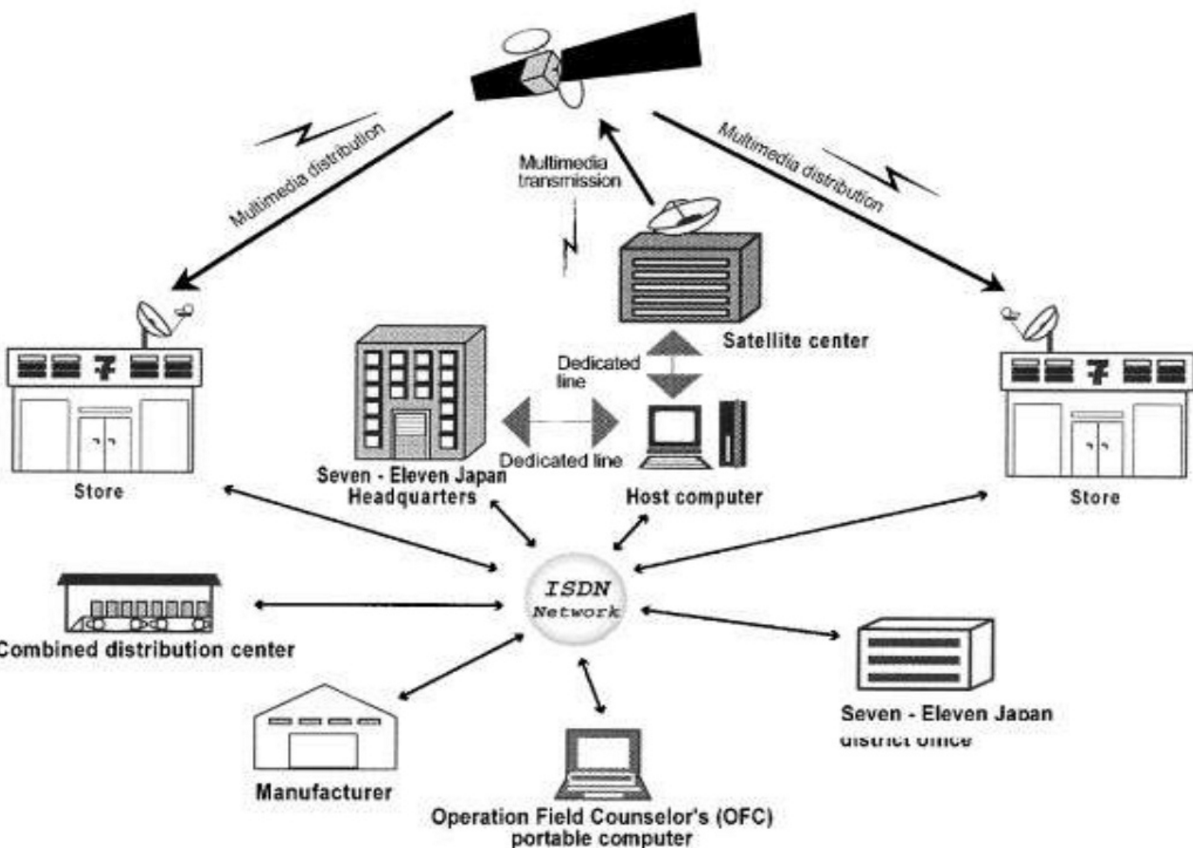
I’m not sure if this reflects the system over many years of upgrades or if a lot of it was set up to work this way in 1998(!!!). It assumed that every store, distribution center, and manufacturer had an internet connection as well as a “field agent” having a laptop with a connection. The slide deck doesn’t show a 6th gen system, so either no information has been released about it or the 5th gen system can scale well enough to last for 18+ years!

